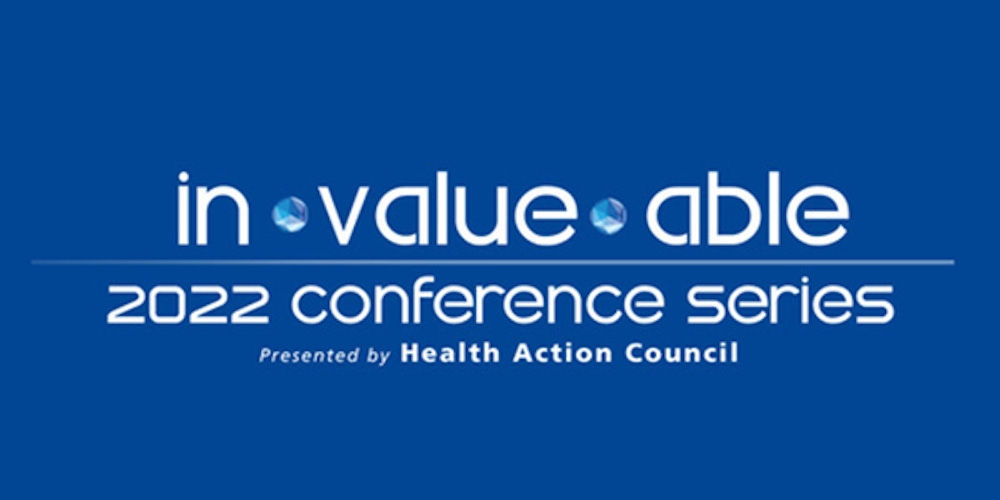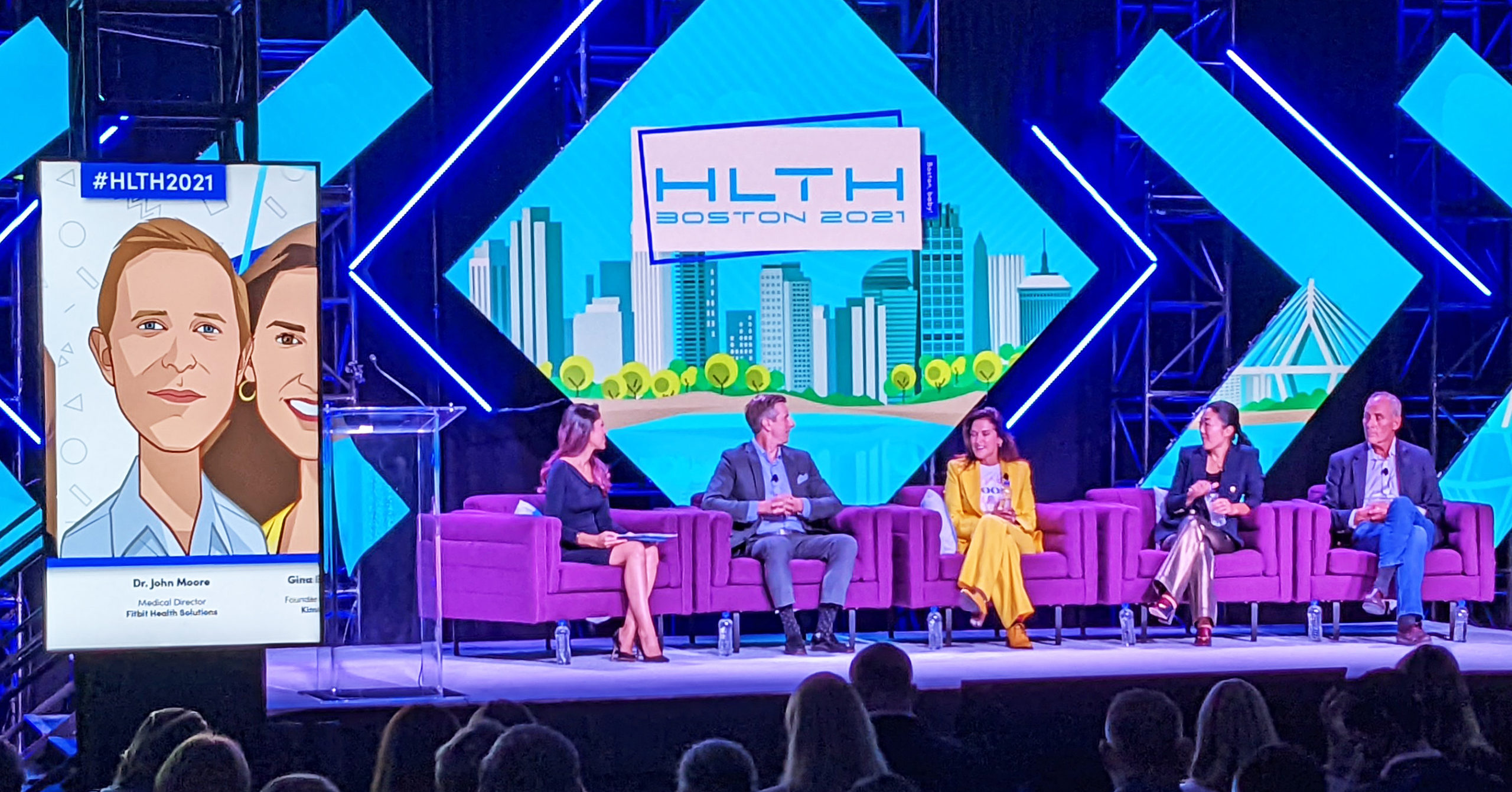4 Key Takeaways from the 2022 HAC In-Value-Able Conference
The 2022 In-Value-Able Conference, a virtual series organized by Health Action Council (HAC), took place over the course of four days from January to March with a focus on educating and inspiring Business & Human Resource leaders from across the country to think creatively about meeting the evolving needs of today’s workforce. With a theme of “Create, Evolve, Inspire, Imagine!”, the event encouraged attendees to redefine how their company’s support their most important resource: the employees.
The Fitbit team joined nationally recognized experts across multiple industries to learn ways to transform employee benefits programs and leadership styles, now and in the future.
Here are a few key messages from this year’s event:
- Turning Change into Opportunity
The world looks very different today than it did in March of 2020, and the constant change and uncertainty brought about by the COVID-19 pandemic does not appear to be slowing down anytime soon. I know I’m not alone in saying that over the past two years I struggled with anxiety and feeling overwhelmed by the unpredictability of the world. With that said, it’s evident we will not revert to a world that looks anything like 2019, and the 2022 In-Value-Able Conference highlighted strategies for adapting and uncovering new opportunities for growth.
The first keynote speaker of the event was Roger Crawford, an author, motivational speaker, and the only person in American history to be a United States Professional Tennis Association athlete and play a Division I college sport with a severe disability. In his speech, Roger shared how a shift in mindset can equip us to move forward by embracing change: “being challenged in life is inevitable, being defeated is optional” and “with a forward to normal mindset, we’re always prepared for the inevitable challenges and change in our lives.” In the professional world, those who are waiting for a “return to normal” will be quickly surpassed by the leaders who embrace change, try new ideas and continue to innovate. It has never been more important to cultivate a culture of creativity and resilience than today, and that sentiment was echoed throughout the event
- Spreading Awareness to Boost Engagement and Productivity
It has never been easier to source information pertaining to any number of topics. With a few keystrokes you can find an answer to any question that comes to mind (Merriam-Webster lists a definition for “Google” as a transitive verb), but the breadth of information and the variance in reliable sources has made it more challenging to uncover the right answers to critical questions. It is essential for today’s business leaders to ensure valuable information outlining resources provided to their employees is straightforward to find and understand.
Unfortunately this is not the case for something as impactful as health benefits and healthcare in the US. Michael Sokol, Senior Vice President of Clinical Strategy at Quantum Health, shared the following stat: “less than half of employees find it easy to use health benefits and barely one-third find it easy to navigate the healthcare system.” The overcomplication of benefits and the US healthcare system has ripple effects that permeate throughout our lives and businesses. Sokol continued to state that 60% of employees are less productive due to this issue and 59% feel stressed taking time away from work to understand their benefits.
A major takeaway from the In-Value-Able Conference to address these issues is to develop benefits strategies with these four pillars in mind: Personalization, Transparency, Choice, and Inclusion. This starts by engaging employees when evaluating solutions and when deploying these resources, so they feel empowered, valued, and supported. When you build a benefits strategy that evolves with your people, you’re showing support for their wellbeing, which will trickle down to improve the communities they live in and your business
- What employers can do to identify and address today’s key issues
Award winning journalist and author Brian Alexander was the keynote speaker on day three of the virtual series, and he didn’t hold any punches when outlining America’s healthcare crisis. During his presentation he highlighted a few stats that I found to be particularly harrowing:
- 11% of American Adults have diabetes
- 42% of American Adults are considered obese
- Over 100,000 Americans died of a drug overdose in 2021
- Commonly used drugs cost ~250% more in the US than other high income nations
According to Mercer’s 2021 National Survey of Employer-Sponsored Health Plans, the average per-employee cost of health insurance jumped 6.3% in 2021 to $14,542, which only amplifies the importance for employers to help solve for Social Determinants of Health at the Population and Member levels. While there is no quick fix for the economic and health disparities ravaging the United States, it’s time to begin innovating so we can disrupt the “Iron Triangle” concept of our healthcare system and ensure all Americans have easy access to low cost, high quality care. To start, Michael Sokol detailed a few components business leaders should consider to address the nonclinical factors that affect Americans ability to live a healthy, happy life:
- Population/Community Level Research
- On-Site/Near-Site Clinics
- Virtual Healthcare
- Investing in Behavioral Health
- Implement Digital Health Point Solutions based on the needs of your members
- Engage and Survey your Population to Educate and Spread Awareness
- Offer Clinical Care Coordination Services
From a business perspective: leadership support is an essential element of a successful health & wellbeing strategy, and that commitment can result in higher customer satisfaction and retention, employee satisfaction and retention, and profitability levels. From a personal perspective: where you were born and where you currently live should not predetermine your health and quality of life, and all Americans have a role to play in changing that narrative
- Creating and Cultivating a Purpose-Driven Organization
March 11th, 2022 marked the second anniversary of the COVID-19 pandemic declaration by the World Health Organization. In the two years since that declaration, seemingly all aspects of life have been altered. Employers are now faced with a number of challenges as they consider how to bring employees back into the office, attract and retain talent, and support their workforce. APA’s 2021 Work and Wellbeing Survey showed that more than 2 in 5 workers intend to evaluate new job opportunities in 2022, and workers who feel stressed during the day are 3x more likely to change jobs. When you consider that on average it costs a company 6 to 9 months of an employee’s salary to replace him or her (SHRM Survey 2017), employers throughout the world are evaluating ways to reduce turnover and the resulting expenses.
Dr. Edward Jackson, Co-Founder and CEO of Meaning-Centered Leadership, led a session centered on the critical impact that meaning has on organizational wealth and individual health & wellbeing. One of the key findings of Dr. Jackson’s research is when employees are fulfilled and find purpose in their work they are 3x more likely to stay with their organization. While the workplace and the needs of the workforce are constantly changing, Dr. Jackson detailed a model for cultivating meaningful work through the three “E”s: Engagement, Empowerment and Expertise, which is effective in any (in-person, hybrid or remote) work environment.
To engage their population, organizational leaders need to be transparent and communicate openly, show personal investment and care through normative expectations and coaching, and practice active listening. To empower employees, Dr. Jackson described a key practice called collaborative visioning, or creating a shared goal that all can rally around and connect with each other while striving towards. Finally, to grow expertise companies should emphasize ethical leadership, establish mentorship programs and simplify the process of sharing knowledge within teams and throughout the organization
By implementing these strategies, you can create an environment that instills “meaning” in the workplace and your population’s lives. Happier employees lead to healthier work environments, higher engagement and productivity, which will positively impact your bottom line.
Overall, the 2022 In-Value-Able Conference Series showcased that while there are several pressing issues confronting Business and Human Resource leaders today, employers are in an excellent position to innovate and ensure their employees feel supported no matter where they are or what they need.



